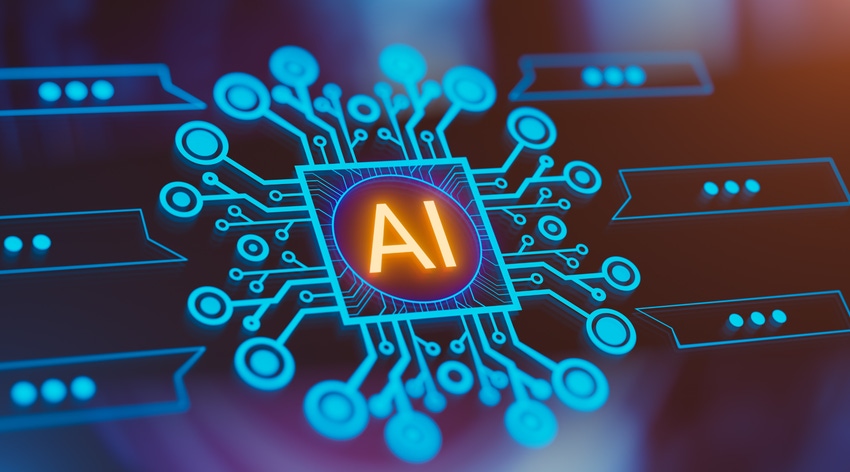While AI continues to show promise in the medtech industry, Kate Stephenson wonders why it’s being used mostly as a one-trick pony when so many opportunities exist.
April 1, 2024

Medtronic’s introduction of its Artificial Intelligence (AI) enabled colonoscopy system turned a few heads at JP Morgan this year. J&J’s surgical partnership with NVIDIA is now building on the earlier excitement, causing many to wonder if AI is “finally” being embraced by strategics. While certainly notable for both the size of the companies involved, both are simply the latest products to join the FDA’s list of nearly seven-hundred AI/ML approved medical devices.
This brings mixed feelings. It’s always encouraging to see a technology scale to the point of serious commercial impact in the health field. The promises of health tech startup founders aside, it is a long road from the promise of a technology to its actual effect on the quality of patient care. The mixed feeling comes in separating the public facing hype from the realities of how new technologies come to market, and how that hype can limit our thinking.
Nick Bostrom, founder of the Future of Humanity Institute at Oxford, made an insightful comment to CNN in 2006, “…once something becomes useful enough and common enough, it's not labelled AI anymore.”
What Alan Turning defined as Artificial Intelligence in the 1950s, what drove IBM’s chess-playing Deep Blue, Microsoft’s Clippy, Deep Blue’s Jeopardy winning grandchild Watson, and the source-of-all knowledge search engine Google all have in common is their eventual transition from technical wonders to everyday.
This is true in medical devices as elsewhere. According to the FDA, “AI is a machine-based system that can, for a given set of human-defined objectives, make predictions, recommendations, or decisions influencing real or virtual environments.”
Per this definition, AI has existed in medical devices for nearly 30 years, with AI devices receiving market approvals starting in the 1990s. AI has played critical roles in the safety and efficacy of everything from insulin pumps to magnetic resonance imaging (MRI), from fetal heart monitors and defibrillators to surgical robotics.
What has changed with the development of modern machine learning techniques is the sheer complexity of the algorithms being embedded in devices. AI applications in cardiovascular that could analyze the highly variable electrocardiogram (ECG) did not get FDA approval until 2015. It took the major breakthroughs in machine learning that occurred around 2012 to create algorithms reliable enough to approach the accuracy of a trained cardiologist. This growth in algorithm sophistication is what has driven the jump in performance and drop in errors across multiple applications, such as the 50% decreased in missed pre-cancerous polyps touted by the Medtronic’s system.
While the clinical possibilities of AI are amazing, I can’t help but feel, as a developer of physical hardware, that more can be done with it. When Medical Device AI is discussed, it is overwhelmingly applied to patient data, to complete the device’s clinical function. We are placing powerful miniature brains in our products and connecting them to a host of sensors and near infinite data resources. Limiting the use of that embedded brain is like only using brains to remember passwords and deciding if it’s safe to cross a street. Those are obviously critical functions, but they are not the only purpose of a brain.
A major function of the brain is to support and ensure the safety and effectiveness of the body. If we are already inserting analytical engines in our medical devices, what is keeping us from using those same “brains” to support the device itself?
Medical device manufacturers are legally responsible for the safety and efficacy of their products. However, the practical aspects of doing so become exceedingly difficult when those products leave the well-documented, climate-controlled environments of a company’s warehouse to travel over land and sea, eventually arriving in hospitals, clinics, and — now more often — homes. Anyone who has been involved in a complex recall or adverse event investigation knows the frustration of trying to peel back the curtain on the black box that often surrounds a device’s use in the field.
Equipping our products with the ability to analyze their environments, watch their health, and even defend themselves are just a few of the opportunities that AI can support.
Environmentally responsive devices
As much as manufacturers try to evaluate their product in every environment, the final product is often an approximation of the most common scenario, or a compromise between multiple scenarios. Modern devices can collect environmental and use data from a range of sources, whether it’s light levels through a camera, ambient noise in a microphone, or menu selection patterns from a graphical interface, all of which can be used to subtly tune a device’s interface to better match the needs of its end use environment. You need look no further than your cell phone for examples.
This is particularly useful in the case of widely used platform technology such as infusion pumps, which have critical applications in environments as diverse as labor and delivery centers, operating rooms, and chemotherapy centers. Automated interface optimization is also useful in more unstable environments, such as ambulances or emergency flights, where light and noise levels can change rapidly.
Health-conscious devices
Environmental data collection and analyses is also useful for addressing some of the more complex failure modes that can harass manufactures. Anyone who has worn a wearable health tracking device for a few days may be surprised to discover how their stress levels vary day to day and week by week. What if we could do the same for a clinic’s most mission critical equipment?
Instead of falling back on a standard “change the oil every 5000 miles”, every clinic could better understand the interaction between their scheduling, the types of procedures they run and how it affects the life and servicing needs of their equipment. This approach is already being implemented in the Industrial Internet of Things (IIOT) for heavy manufacturing equipment. A critical piece of equipment — whether it be a ventilator, imaging system or EKG — going offline can mean tens of thousands of dollars in lost revenue per hour, not to mention the distress to both patients and care team of last-minute rescheduling.
When equipment does go down, AI can also provide the resources to get it running again. Companies like Bruviti are creating AI agents to interact with equipment, train field agents, and streamline repair and maintenance. Whether it’s replacing error codes with natural language communications, or auto-generating live dashboards to prioritize the servicing of potentially thousands of pieces of technology in a large-scale facility, AI can meet dozens of niche needs for keeping equipment as healthy as the patients.
Defendable devices
While the earlier examples tend towards optimization and “nice to haves”, there is the very real need to utilize AI/ML to detect and manage hostile cybersecurity attacks. The FDA released its Medical Device Cybersecurity guidance for pre-market approvals in September of 2023, updated again recently, to address the growing concerns with the harm that could be done through a connected medical device. Connected device attacks are generally not intended to directly tamper with the medical care of a patient but are used as an entry point to a healthcare system’s patient records, which can then be held for ransom, or sold to different parties.
Ones of the big challenges with ensuring device security is the growth in attack volume and sophistication, themselves enabled by AI/ML technology. It is not enough to set up a secure system, manufacturers need to monitor connections, check for suspicious data, flag possible attacks, and continue to grow and evolve these abilities. These are all functions that are rapidly growing beyond the capabilities of manual processes or even basic software, making them perfect for AI.
Where to?
The FDA is continuing to scale up their authorizations of AI-enabled medical devices, and applications are slowly expanding beyond the early focus on imaging — currently taking up 87% of those 700 FDA approvals. We will likely see several breakthrough clinical applications hitting headlines soon. However, modern medical devices will continue to be a combination of carefully executed physical products and rigorously evaluated digital technologies. As an industry, we need to continue to use every tool we have, including AI, to manage both.
About the Author(s)
You May Also Like




